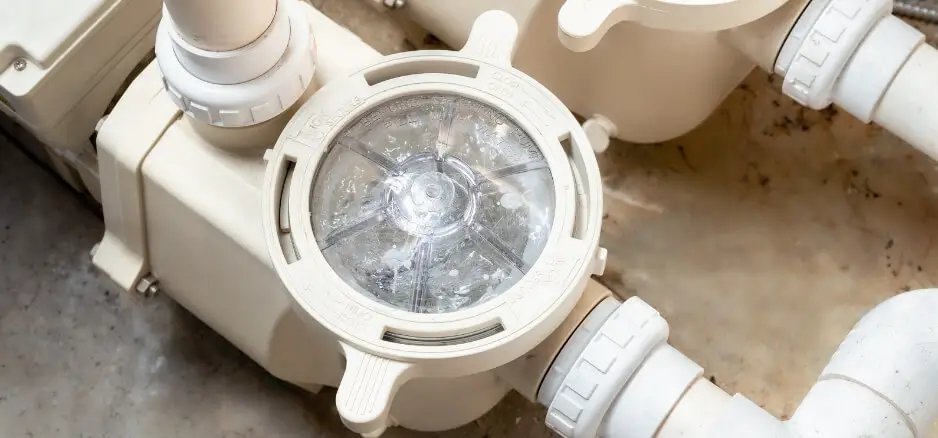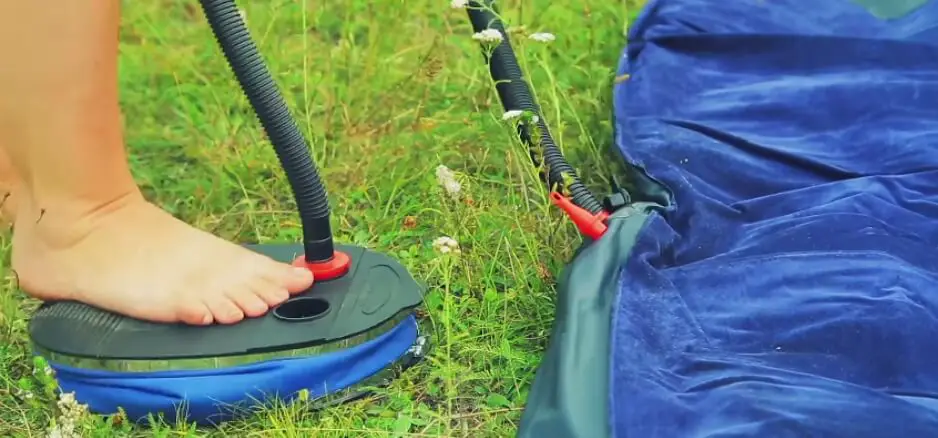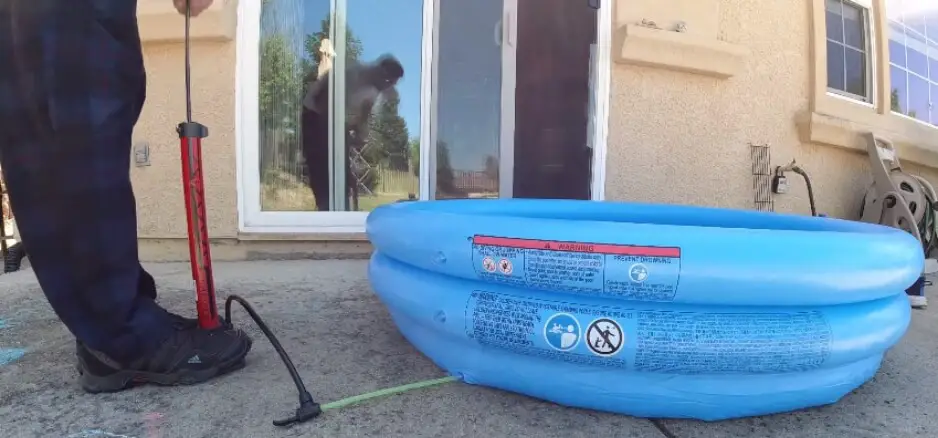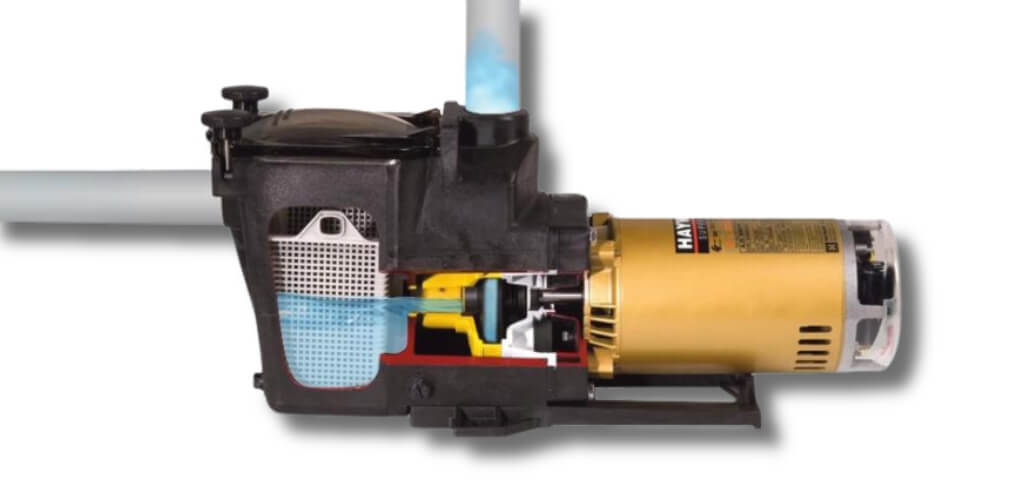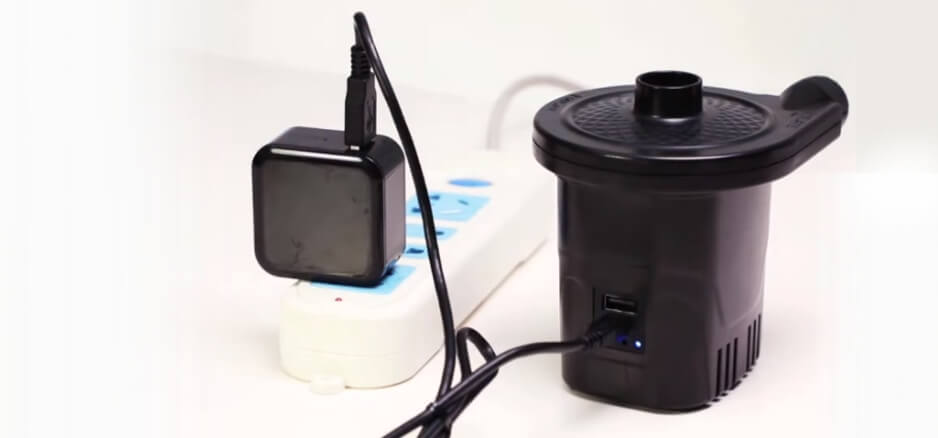
Best Rechargeable Air Pump for Inflatables
Welcome to our comprehensive guide on finding the best rechargeable air pump for inflatables. Whether you’re inflating pool toys, air mattresses, or camping gear, having a reliable rechargeable air pump is essential for hassle-free inflation anytime, anywhere. In this guide, we’ll explore the key factors to consider when choosing the perfect pump, review some top picks, and provide expert tips to help you make the right choice. Now let’s get started and choose the best rechargeable air pump for your requirements!
Our Top 5 Picks: Reviews of the Best Rechargeable Air Pump for Inflatables
Product Name | Brand | Color | Material | Price |
Dr.meter Electric Air Pump for Inflatables | Dr.meter | Black | Plastic | |
AGPTEK Rechargeable Air Pump | AGPTEK | Black | Plastic | |
Coleman QuickPump Air Pump for Air Beds & Inflatables | Coleman | Multi | Blend | |
Whiriwhiri Portable Air Pump with 5200mAh Battery | whiriwhiri | Black | ABS and PC | |
ETENWOLF AIR 3 Air Pump for Inflatables | ETENWOLF | Vivid Orange | Plastic |
When it comes to finding the best rechargeable air pump for inflatables, the market offers a plethora of options to choose from. To help narrow down your search, we’ve curated a list of our top-rated picks based on extensive research and customer feedback.
Product 1. Dr.meter Electric Air Pump for Inflatables
Meet the Dr.meter Cordless & Rechargeable Air Pump – your ultimate solution for instant inflation without the hassle of cords. This compact powerhouse is not just an air pump but also a versatile companion with features designed for convenience and efficiency. Let’s delve into what makes this air pump stand out.
Features and Specifications:
- Cordless & Rechargeable: The Dr.meter air pump is powered by a robust 4000mAh lithium battery, ensuring instant inflation without the need for cords. With a built-in USB port, recharging is a breeze, making it ready for action at home or on the go.
- 3 Nozzle Sizes: Versatility is key. This air pump comes with three nozzle sizes (S-0.28in, M-0.35in, L-0.57in), ensuring a perfect fit for a variety of inflatables. Whether it’s big, small, tall, or wide, if it has a valve, this pump can handle it.
- Inflate Quickly: The compact size and strong motor optimize airflow for quick and easy inflation. When the day is done, the Dr.meter air pump also excels at quick deflation, ensuring efficient packing.
- Ultra-Compact: Don’t let size limit power. The ultra-compact design allows this air pump to pack a punch without adding bulk. It ensures you’re always prepared to inflate your beach ball, bounce house, airbed, inflatable boat, pool, and more because it fits neatly into a backpack, luggage, or tool box.
- Doubles as A Portable Charger: Beyond inflation, this air pump doubles as a portable charger. You can quickly charge your laptop, tablet, phone, and other devices with the 5V USB output connector.
Pros
- Cordless convenience for inflation anywhere.
- Multiple nozzle sizes cater to various inflatables.
- Quick inflation and deflation for time-saving convenience.
- Compact design enhances portability.
- Dual functionality as an air pump and portable charger adds versatility.
Cons
- Limited information on durability in long-term usage.
- When operating, it could make a considerable amount of noise.
- Some users may find the included nozzles slightly delicate.
Product 2. AGPTEK Rechargeable Air Pump
Introducing the AGPTEK Rechargeable Air Pump – Your Ultimate Inflation Companion!
Are you sick and weary of being dependent on power outlets or battling with manual pumps? There’s nowhere else to look.! The AGPTEK Rechargeable Air Pump is a game-changer in the world of inflatables, offering cutting-edge features to make your inflation experience seamless and convenient.
Features and Specifications:
- High Capacity Battery: Equipped with a powerful 4000mAh rechargeable battery, this air pump delivers top-notch performance and an extended battery life, allowing for up to 25 minutes of continuous use on a single charge. Take advantage of the integrated indicator light to monitor your electricity.
- Multiple Charging Modes: Enjoy the flexibility of charging your air pump at home, in the car, or on-the-go with the built-in USB port. The USB car charger adapter adds an extra layer of convenience, making charging hassle-free wherever you are.
- Three-in-One Nozzle Design: Versatility is key! The air pump comes with three different nozzles (S-0.28in, M-0.35in, L-0.57in), ensuring compatibility with a wide range of inflatables. From inflatable toys to air mattresses, this pump has you covered.
- Small, Lightweight & Portable: Say goodbye to bulky pumps! This air pump’s lightweight and small form makes it incredibly portable. Toss it into your backpack, suitcase, or tool kit – it’s ready to accompany you on all your indoor and outdoor adventures.
- Wide Application: With wireless operation and a rechargeable battery, this electric air pump is your go-to solution for various inflatables. From swim tubes and inflatable sofas to airbeds and bounce houses, the AGPTEK pump handles it all with ease.
Pros
- Portable and lightweight for easy transportation.
- Versatile nozzle options cater to different inflatable products.
- Rechargeable battery provides cordless convenience.
- Indicator light for clear battery status monitoring.
- Multiple charging modes offer flexibility and convenience.
Cons
- Some users reported issues with nozzle durability over time.
- When operating, the pump may make a modest amount of noise.
Product 3. Coleman QuickPump Air Pump for Air Beds & Inflatables
Introducing the Coleman QuickPump Rechargeable Electric Pump – Your Portable Inflation Solution!
Tired of manual pumping and searching for power outlets? With the Coleman QuickPump, inflation tasks will be a breeze. Whether you’re at home, by the pool, or on a camping trip, this rechargeable electric pump offers unmatched convenience and versatility.
Features and Specifications:
- Battery Powered: The 120-volt charger that is provided with the Coleman QuickPump makes it simple to recharge the built-in battery. Bid farewell to heavy cords and outlets; inflate whenever and wherever you like.
- Portable: This electric pump is the pinnacle of portability due to its small and light construction. Carry it effortlessly to your favorite camping spot, use it by the poolside, or keep it handy at home for quick and easy inflation.
- Versatile: The pump includes Boston and pinch valve adapters, catering to a variety of common inflatables. With the appropriate adapters, this multipurpose electric pump may be used to inflate anything from air mattresses to pool floats.
- One Year Limited Warranty: With the Coleman QuickPump’s one-year limited warranty, you may have peace of mind. It’s evidence of the product’s excellence and the maker’s faith in its dependability and efficiency.
Pros
- Cordless operation for hassle-free inflation.
- Compact and lightweight design for effortless transporting.
- Versatile adapters for inflating various types of inflatables.
- A rechargeable battery guarantees convenience when traveling.
- supported by a limited guarantee of one year for extra peace of mind.
Cons
- The pump may generate moderate noise during operation.
- Limited battery life may require recharging for extended use.
Product 4. Whiriwhiri Portable Air Pump with 5200mAh Battery
Introducing the Whiriwhiri Rechargeable Air Pump – Your Portable Powerhouse for Effortless Inflation!
Never worry about running out of battery during your outdoor adventures with our high-capacity 5200mAh rechargeable air pump. Designed for ultimate convenience, this wireless mini pump provides hours of continuous operation, making it perfect for extended camping trips or inflating multiple items on the go.
Features and Specifications:
- 5200mAh High Capacity Battery: Take use of a dependable and long-lasting power source for continuous outdoor activities. The pump works for hours continuously after a single USB cable charge, eliminating the hassle of frequent recharging.
- 4000-Pa High Air Pressure & Rapid 300L/min Airflow: Inflate quickly, powerfully, and effectively with a high air pressure of 4000Pa and a rapid 300L/min airflow. Ensure quick setup and quick deflation for optimum relaxation time by quickly inflating air beds, pillows, paddle boats, swimming rings, and more in no time.
- 60mins + Longer Operating Time: With a higher battery capacity, the air pump operates for an extended period without the need for recharging. Ideal for camping trips, vacations, travel, and outdoor activities, providing convenience and uninterrupted use.
- 13oz Portable and Convenient: Compact and lightweight, our air pump measures just 3″ * 3″ * 4.4″ and weighs only 13oz (0.8lb). It has three different nozzle sizes for small, medium, and big inflatables and is made to be as portable as possible. Enjoy hassle-free inflation and deflation on the go with this portable device.
- 90 Days Warranty Durable and Reliable: Our air pump is made with premium materials and is long-lasting. Withstand regular use and enjoy reliable performance every time. Invest in a durable and dependable pump that comes with a 90-day manufacturer’s warranty, ensuring peace of mind on all your adventures.
Pros
- High-capacity battery for extended use.
- Powerful airflow and air pressure for efficient inflation.
- Longer operating time for multiple inflations.
- Lightweight and transportable design for convenience.
- Durable construction backed by a 90-day warranty.
Cons
- It may be a little noisy when operating for some people.
- The compact size may lead to a shorter charging cable.
- Limited nozzle options for specific inflatables.
Product 5. ETENWOLF AIR 3 Air Pump for Inflatables
Introducing the ETENWOLF AIR 3 – Your Ultimate Portable Inflation Companion!
Experience inflation and deflation like never before with the ETENWOLF AIR 3. This ultra-compact, multi-functional air pump is designed to make your outdoor adventures and inflatable experiences more efficient and enjoyable.
Features and Specifications:
- 2X Faster Inflation & Deflation: Boasting a powerful 0.65PSI air pressure and 13 CFM wind speed, the ETENWOLF AIR 3 achieves rapid inflation and deflation. In just 1 minute, it can inflate an air mattress, and deflate it in a speedy 40 seconds.
- 2X Larger Battery Capacity: With a robust 2600mAh Lithium Battery, the AIR 3 can inflate up to 16 sleeping pads or 4 inflatable swimming pools (58”*13″) on a full charge. Compatible with any type C quick charger, it ensures a quicker recharge for continuous use.
- As Tiny As an Egg: The AIR 3 is super mini and lightweight, resembling the size of an egg. It features a convenient hook for easy attachment to your backpack or pocket, making it the perfect on-the-go companion.
- 600 Lumens Camping Light: Beyond an air pump, the AIR 3 comes equipped with a powerful LED light offering 3 modes – 60 Lumens soft light, 200 Lumens reading light, and an impressive 600 Lumens outdoor light for versatile illumination during your outdoor escapades.
- 5 Nozzles & Diverse Uses: Featuring 5 nozzles, the AIR 3 is suitable for a wide range of inflatable products, from air mattresses and pool floats to vacuum storage bags, inflatable beds, sleeping pads, swimming rings, inflatable furniture, and more.
Pros
- Rapid inflation and deflation for quick setup and takedown.
- Extended battery capacity for multiple inflations on a single charge.
- Ultra-compact and lightweight design for portability.
- Versatile LED light with multiple brightness modes.
- Wide range of nozzle options for diverse inflatable uses.
Cons
- In some circumstances, some people could perceive the LED light to be excessively bright.
- The compact size may result in a shorter power cable.
- Limited information on waterproofing for outdoor use.
Factors to Consider When Choosing the Best Rechargeable Air Pump
When on the hunt for the ideal rechargeable air pump, navigating through the myriad of options can be overwhelming. To ensure you make a well-informed decision, it’s crucial to weigh several factors that directly impact the pump’s performance and your overall satisfaction. Here’s a detailed look at key considerations:
A. Inflatable Type and Size:
One of the foremost considerations when selecting a rechargeable air pump is understanding the variety of inflatables you plan to use it for. Different inflatables, whether it be air mattresses, pool floats, or camping gear, may have varying valve sizes and air capacity requirements. Assess the diversity in your inflatable collection and ensure the chosen air pump is compatible with the sizes and types you frequently use.
B. Pump Power and Pressure:
The effectiveness of a rechargeable air pump is closely tied to its power and pressure capabilities. Consider the pump’s PSI (pounds per square inch) or kPa (kiloPascal) rating, as well as its cubic feet per minute (CFM) air output. Higher values in these metrics often signify faster inflation times and the ability to handle inflatables with greater air volume requirements. Tailor your choice to match the intended use, whether it’s for quick inflation of air mattresses or more substantial items like inflatable boats.
C. Battery Life and Charging Time:
The convenience of a rechargeable air pump hinges on its battery life and charging time. Assess the expected usage duration on a single charge and compare it with your typical inflation needs. In particular, extensive outside activities require a longer battery life. You should also think about how long it takes to charge; if time is of the essence on your trips, a faster recharge may be beneficial.
D. Portability and Weight:
The portability of a rechargeable air pump is paramount, particularly if you plan to carry it for outdoor activities. Opt for a pump with a compact design and a lightweight build. A portable pump should seamlessly fit into your backpack, luggage, or camping gear without adding unnecessary bulk. This ensures that you can have on-the-go inflation whenever and wherever you need it.
E. Noise Level:
Noise can be a factor often overlooked in the excitement of choosing an air pump. Consider the noise level generated during operation, especially if you plan to use the pump in quiet environments or during nighttime camping. Look for pumps with noise reduction features or quieter motor technologies to minimize disturbances.
F. Additional Accessories and Features:
Beyond basic inflation, explore additional accessories and features that enhance the pump’s usability. Some pumps come with a variety of nozzle attachments, ensuring compatibility with different valve sizes. Others may have built-in LED lights for low-light conditions or additional functionality like USB ports for charging devices. Assess these extra features to determine their relevance to your specific needs.
Choosing the best rechargeable air pump for inflatables involves a holistic consideration of inflatable types, power specifications, battery features, portability, noise levels, and any extra accessories that contribute to a seamless and efficient inflation experience. With careful consideration of each factor, you can make an informed decision that fits your specific requirements.
How to Use a Rechargeable Air Pump Effectively
Whether you’re inflating camping gear, pool floats, or air mattresses, mastering the effective use of a rechargeable air pump is key to a hassle-free experience. Here’s a comprehensive guide along with some tips and tricks to ensure you get the most out of your rechargeable air pump:
A. Step-by-Step Guide:
Using a rechargeable air pump effectively involves a straightforward process, ensuring smooth and efficient inflation for various inflatables. To help you get the most out of your rechargeable air pump, follow these steps:
- Charge the Battery: Before beginning any inflation task, ensure that the pump’s battery is fully charged. Using the included charging cable, connect the pump to a power source and let it charge until the indicator indicates that the charge is complete.
- Select the Correct Nozzle: Numerous nozzle attachments are included with the majority of rechargeable air pumps to fit varying valve diameters. Choose the appropriate nozzle for the inflatable you are planning to fill to ensure a secure and airtight fit.
- Attach the Nozzle to the Pump: Carefully connect the selected nozzle to the air pump, ensuring a tight fit. A secure connection is crucial for efficient inflation and prevents air leakage during the process.
- Place the Nozzle within the Floating Valve:
- Insert the nozzle into the inflatable valve. To stop air from escaping during inflating, make sure it fits snugly. Hold the nozzle firmly in place while operating the pump.
- Power On the Pump: Turn on the rechargeable air pump using the designated power button. Certain pumps can have pressure-adjustable settings; make the necessary adjustments based on the pressure that is suggested for your inflatable.
- Track the Inflation: Pay attention to the rate of inflation. Many air pumps have indicator lights or displays that show the current pressure level. Stop the pump once the inflatable reaches the desired firmness.
- Remove the Nozzle and Secure the Valve: After inflation, disconnect the nozzle from the inflatable valve. Quickly secure the valve to prevent any air from escaping. Ensure a proper seal for optimal performance.
- Power Off the Pump: Turn off the rechargeable air pump once the inflation is complete. This avoids inadvertent over-inflation and prolongs the life of the battery.
- Store the Pump and Accessories: Store the pump and any additional accessories in a safe and dry place. Proper storage helps maintain the longevity of the pump and ensures it’s ready for future use.
B. Tips and Tricks for Efficient Inflation:
- Prep Your Inflatables: Before starting the inflation process, lay out your inflatables and ensure there are no sharp objects or debris that could potentially damage them during inflation.
- Understand Recommended Pressures: Familiarize yourself with the recommended inflation pressure for each of your inflatables. Under- or over-inflating an object can affect its performance, and both can cause harm.
- Watch Battery Life: During use, especially for prolonged inflation jobs, keep a watch on the battery life indicator. Ongoing operation is ensured by being aware of the battery’s remaining capacity.
- Avoid Overloading the Pump: While rechargeable air pumps are versatile, avoid overloading them with excessively large inflatables. Consider the pump’s capacity to guarantee best performance.
- Maintain Nozzles and Seals: Periodically check the condition of the nozzles and seals. To guarantee a tight fit and stop air leaks, clean them if needed and replace any broken parts.
- Keep the Pump Cool: During prolonged use, rechargeable air pumps may generate heat. Between inflations, let the pump cool down to avoid overheating and guarantee reliable operation.
- Store in a Controlled Environment: Store the rechargeable air pump in a cool and dry environment to maintain its overall condition. Extreme temperatures and humidity can impact the pump’s longevity.
Maintenance Tips for Longevity
To ensure the longevity and consistent performance of your rechargeable air pump, adopting a proactive approach to maintenance is essential. Here are key considerations for maintaining your pump in top-notch condition:
A. Cleaning and Storage:
Keeping your rechargeable air pump clean and properly stored goes a long way in preserving its functionality. usage a moist cloth to wipe the exterior of the pump clean of any dirt or debris after each usage. Pay special attention to the nozzle area, ensuring it remains free of any blockages. If the pump has been exposed to sand or dust, use a soft brush to clean the vents and prevent clogs. The pump should be stored in a cool, dry location to avoid damage from moisture.
A carrying case or bag can provide additional protection, especially during transportation or when not in use for extended periods.
B. Battery Care:
Proper battery care is crucial for maintaining optimal pump performance. To make sure the battery in your rechargeable pump lasts a long time, use these suggestions:
Full Charge Before Storage: Make sure the pump is completely charged before storing it if you want to do so for a long time. This prevents the battery from becoming overly discharged during storage.
Regular Charging: Even if the pump is not in frequent use, aim to charge it regularly. Lithium-ion batteries, common in rechargeable pumps, benefit from periodic charging to maintain their health.
Avoid Complete Discharge: While it’s good to discharge and recharge occasionally for calibration, avoid fully discharging the battery regularly. This may shorten the battery’s lifespan overall.
Temperature Considerations: Lithium-ion batteries are sensitive to extreme temperatures. Avoid subjecting the pump to extremes of heat or cold as this may affect the functioning of the battery. Optimal storage temperature is generally between 20°C (68°F) and 25°C (77°F).
Conclusion
In conclusion, finding the best rechargeable air pump for inflatables is all about considering your specific needs. Whether you’re camping, hitting the beach, or enjoying a day by the pool, the right pump makes a world of difference. When making a decision, consider aspects like mobility, power, and extra features. With the perfect rechargeable air pump in hand, you’ll breeze through inflation tasks effortlessly, ensuring your inflatables stay ready for action. Explore the options, prioritize your preferences, and elevate your inflatable experiences with the ideal rechargeable air pump. Your hassle-free inflation journey starts here!
Frequently Asked Questions
Q1. What makes a rechargeable air pump the best for inflatables?
Answer: The best rechargeable air pump excels in factors like power, portability, and versatility. To accommodate different inflatable kinds, look for pumps with varied nozzle attachments and pressure settings that can be adjusted.
Q2. How long does the battery last on a top-notch rechargeable air pump?
Answer: Although battery life varies, high-quality pumps have longer battery life between charges. Depending on the pump’s specs, you can anticipate a continuous inflating period of anywhere from 20 minutes to more than an hour.
Q3. Are rechargeable air pumps suitable for all inflatables?
Answer: Yes, the majority of rechargeable air pumps include numerous nozzle attachments, which allows them to be used with a variety of inflatables, including camping equipment, mattresses, and pool toys. Ensure the pump has the right nozzle for your specific needs.

